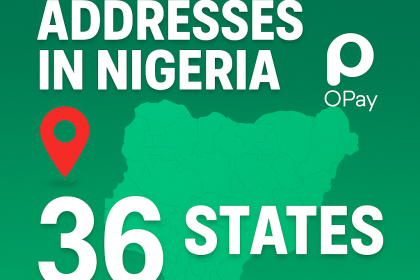If you have been wondering how to make money online , ponder no more . Below are thoroughly researched platforms ,websites where you can teach any topic online and make money from the comfort of your bedroom using your mobile phone .

1. Udemy
Website: Udemy
Procedure:
- Course Creation: Create a Udemy account and design your course content. Udemy offers tools to structure your course, including video lectures, quizzes, and assignments.
- Pricing: Decide on the pricing for your course. Udemy often has sales, so consider both the regular and discounted prices.
- Publishing: Once your course is ready, you can publish it on Udemy. They have specific guidelines and criteria for course approval.
- Promotion: Promote your course using social media, blogs, or through Udemy’s promotional tools. You can also leverage Udemy’s marketing channels.
- Revenue Sharing: Udemy has a revenue-sharing model. You typically get paid a percentage of the course price when students purchase your course, often with promotions and discounts taken into account.
2. Coursera
Website: Coursera
Procedure:
- Course Creation: Join as a course creator or partner with an institution. Courses are often created in collaboration with universities or educational organizations.
- Course Approval: Coursera has a review process for courses. You’ll need to submit your course for evaluation, including a syllabus, video lectures, and other content.
- Royalties: Course creators often earn royalties based on a revenue-sharing model, with earnings linked to the number of subscribers and engagement.
- Promotion: Coursera helps promote your course through its platform and marketing efforts, reaching a wide audience.
3. Teachable
Website: Teachable
Procedure:
- Course Setup: Sign up and create your online school. Customize your school’s appearance and set up your course content using Teachable’s easy-to-use platform.
- Pricing: Choose your course pricing, whether it’s a one-time fee, a subscription, or installment payments.
- Payment Gateways: Connect your payment gateways to receive payments directly from your students.
- Sales and Marketing: Use Teachable’s built-in marketing features and integrate with other marketing tools to promote your course and boost sales.
- Revenue: Teachable allows you to retain a significant portion of your course sales, depending on your subscription level.
4. Skillshare
Website: Skillshare
Procedure:
- Course Creation: Sign up as a Skillshare teacher and create engaging classes. Skillshare primarily focuses on creative and artistic topics.
- Royalties: You earn money based on the number of minutes watched by Skillshare premium members each month, with bonuses for popular classes.
- Community Engagement: Active engagement with the Skillshare community can enhance your visibility and earnings.
- Promotion: Skillshare promotes your classes through its platform and marketing channels, potentially increasing your audience.
5. LinkedIn Learning
Website: LinkedIn Learning
Procedure:
- Application: Apply to become a LinkedIn Learning instructor. They carefully select educators based on expertise and teaching capabilities.
- Course Creation: If accepted, create your course following LinkedIn Learning’s guidelines and best practices.
- Royalties: Instructors are compensated based on the consumption of their courses by LinkedIn Learning subscribers.
- Visibility: LinkedIn Learning offers a vast user base and promotes your courses to professionals seeking to enhance their skills.
- Engagement: Encourage engagement within the LinkedIn Learning community for higher visibility and potential increased earnings.
Each platform has its unique advantages and requirements, so it’s essential to choose the one that aligns with your teaching style, target audience, and course content. Always carefully review the terms, commission structures, and support each platform provides to make an informed decision.
6. YouTube
Website: YouTube
Procedure:
- Channel Creation: Create a dedicated YouTube channel focusing on educational content related to the subject you wish to teach.
- Content Creation: Produce high-quality educational videos, tutorials, lectures, or demonstrations pertaining to your chosen subject.
- Monetization: Enable monetization on your YouTube channel to generate revenue through ad placements, memberships, and Super Chats during live sessions.
- Audience Engagement: Foster engagement with your audience by responding to comments, hosting live Q&A sessions, and encouraging discussions within the community.
7. edX
Website: edX
Procedure:
- Course Creation: Collaborate with universities and educational institutions to create comprehensive courses covering a variety of subjects.
- Course Approval: Submit your course for review and approval by edX, ensuring it meets the platform’s quality and educational standards.
- Partnership: Partner with edX or an educational institution to offer your course on their platform, gaining access to a broader audience.
- Compensation: Compensation is typically negotiated based on factors such as course popularity, student engagement, and the specifics of the partnership agreement.
8. Khan Academy
Website: Khan Academy
Procedure:
- Content Creation: Develop educational content, tutorials, exercises, and instructional materials within your area of expertise.
- Partnership or Contribution: Collaborate with Khan Academy by contributing your knowledge and expertise, creating a positive impact on global education.
- Community Engagement: Engage with learners by answering questions, providing additional explanations, and offering guidance to enhance the learning experience.
- Educational Impact: Contribute to making education more accessible and effective for learners worldwide through your contributions.
9. Chegg Tutors
Website: Chegg Tutors
Procedure:
- Tutor Registration: Sign up and create a tutor profile on Chegg Tutors, detailing your expertise and the subjects you can teach.
- Connect with Students: Connect with students seeking help in various subjects and academic levels, and provide assistance through online tutoring sessions.
- Hourly Compensation: Earn compensation for each tutoring session conducted, with rates varying based on the subject and your level of expertise.

10. VIPKID
Website: VIPKID
Procedure:
- Teacher Application: Submit an application to become an online English teacher for VIPKID, focusing primarily on teaching English to students in China.
- Interview and Demo Lesson: Complete an interview and a demonstration lesson to showcase your teaching skills and proficiency in the English language.
- Teaching Sessions: Conduct one-on-one online English lessons with Chinese students, following the provided curriculum and guidelines.
HERE ARE WEBSITES/PLATFORMS WHERE YOU GET FINANCIAL HELP FROM THE RICH . CLICK HERE TO GET STARTED
- Compensation: Receive compensation based on the number of teaching sessions completed, with opportunities for additional incentives and bonuses tied to performance and referrals.
These platforms offer diverse opportunities for educators to share knowledge, teach, and earn income. Each platform has its own unique features and requirements, allowing educators to choose the best fit based on their expertise and teaching objectives.
11. Wyzant
Website: Wyzant
Procedure:
- Tutor Registration: Sign up as a tutor on Wyzant, providing details about your expertise, subjects you can teach, and your teaching experience.
- Profile Setup: Create a comprehensive tutor profile showcasing your qualifications, availability, and pricing.
- Connect with Students: Connect with students looking for tutoring in various subjects, and arrange sessions based on your availability and the student’s needs.
- Hourly Compensation: Earn money for each tutoring session conducted, with rates determined by you and agreed upon by the student.
12. Verbling
Website: Verbling
Procedure:
- Language Teaching: Sign up as a language teacher on Verbling, specializing in teaching languages such as English, Spanish, French, etc.
- Profile Creation: Build a detailed teacher profile highlighting your language expertise, teaching approach, and availability.
- Class Scheduling: Set your own schedule and availability for classes, and students can book sessions with you based on the provided schedule.
- Compensation: Receive compensation for each tutoring session conducted, with rates set by you and agreed upon by the student.
13. Cafetalk
Website: Cafetalk
Procedure:
- Tutor Registration: Sign up as a tutor on Cafetalk, specializing in a wide range of subjects, including languages, music, art, and more.
- Profile and Lesson Setup: Create an attractive tutor profile and design your lessons, setting your own pricing and scheduling.
- Student Booking: Students can browse tutor profiles, book lessons, and pay for sessions.
- Payment and Compensation: Receive compensation for each session conducted, with payments handled securely through Cafetalk’s platform.
14. Superprof
Website: Superprof
Procedure:
- Profile Creation: Create a teacher profile on Superprof, detailing your expertise and subjects you can teach.
- Student Connection: Students can search for teachers based on subjects and location, then contact you for lessons.
- Class Scheduling and Compensation: Set your availability and schedule classes with students. Determine compensation and payment methods directly with students.
- Online or In-Person Teaching: Offer both online and in-person lessons, providing flexibility for both you and your students.
15. Tutapoint
Website: Tutapoint
Procedure:
- Tutor Application: Apply to become an online tutor on Tutapoint, specializing in various subjects for K-12 students.
- Interview and Qualification: Complete an interview and assessment to demonstrate your knowledge and teaching abilities.
- Tutoring Sessions: Conduct online tutoring sessions with students, assisting them with their academic needs and questions.
- Compensation: Earn compensation for each tutoring session conducted, with rates determined based on your qualifications and expertise.
These platforms offer diverse opportunities for educators to share knowledge, teach, and earn income in a variety of subjects and skills. Educators can choose platforms that align with their expertise and preferences, making education more accessible and effective for learners across the globe.
16. LearnWorlds
Website: LearnWorlds
Procedure:
- Course Creation: Sign up and create an online course using LearnWorlds’ platform. Design and customize your course content and structure.
- Branding and Pricing: Customize your course’s branding and set the pricing according to your preferences.
- Publishing: Publish your course and make it available to potential students.
- Promotion: Utilize marketing tools provided by LearnWorlds and integrate with other marketing channels to promote your course effectively.
- Revenue Generation: Earn revenue based on the sales of your courses, with the ability to retain a significant portion of the earnings.
17. Pluralsight
Website: Pluralsight
Procedure:
- Course Creation: Apply to become an author on Pluralsight, focusing on creating technology-focused courses and tutorials.
- Content Development: Develop high-quality courses and instructional content based on your expertise in various technology-related subjects.
- Collaboration and Review: Collaborate with Pluralsight’s team for content review and improvement before publication.
- Revenue Sharing: Earn revenue through a revenue-sharing model based on the consumption of your courses by Pluralsight subscribers.
18. Gumroad
Website: Gumroad
Procedure:
- Content Creation: Create and package your educational resources, such as ebooks, video tutorials, digital downloads, or educational materials.
- Profile Setup: Set up your profile on Gumroad and upload your educational products for sale.
- Promotion: Promote your products using various marketing strategies and tools provided by Gumroad.
- Direct Sales and Payments: Sell your educational resources directly to your audience, receiving payments through Gumroad’s secure platform.
19. Etsy
Website: Etsy
Procedure:
- Shop Setup: Create an online shop on Etsy, specifically focused on educational resources, printables, or digital downloads related to your expertise.
- Product Listings: List your educational materials, resources, or courses for sale on your Etsy shop.
- Marketing and Promotion: Leverage Etsy’s marketplace and promote your products through social media, blogs, and other marketing channels.
- Sales and Transactions: Sell your educational resources directly to customers through Etsy’s secure transaction system.
20. Gumroad
Website: Gumroad
Procedure:
- Content Creation: Similar to the previous mention, create and package your educational resources, such as ebooks, video tutorials, digital downloads, or educational materials.
- Profile Setup: Set up your profile on Gumroad, and upload your educational products for sale.
- Promotion: Utilize various marketing strategies and tools provided by Gumroad to promote your products effectively.
- Direct Sales and Payments: Sell your educational resources directly to your audience, receiving payments securely through Gumroad’s platform.
These platforms provide educators with opportunities to share their knowledge and expertise, offering a variety of educational resources and courses to learners worldwide while allowing for different types of content and pricing strategies.






One Comment
Raymond Adegboyega
January 1, 2024 at 8:44 pmThanks,pls why is udemy link not clickable?